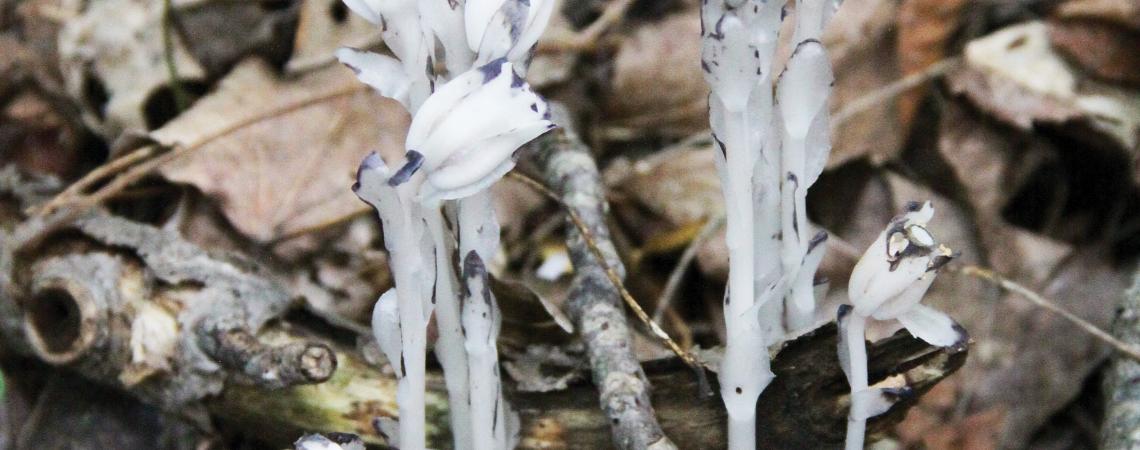I enjoy reading — always have. One of my favorite books is Wilson Rawls’ 1961 classic, Where the Red Fern Grows. The author reveals the origin of the title of his fiction novel through his young protagonist, Billy Colman, who lived in the Oklahoma Ozarks:
“I had heard the old Indian legend about the red fern. How a little Indian boy and girl were lost in a blizzard and had frozen to death. In the spring, when they were found, a beautiful red fern had grown up between their two bodies. The story went on to say that only an angel could plant the seeds of a red fern, and that they never died; where one grew, that spot was sacred.”
Ohio has its own version of a “red fern,” a plant eerie and haunting, mysterious and ephemeral, yet at the same time beautiful and delicate — it’s known as “ghost plant” or “ghost pipe.” Native American tribes were familiar with it, which is why the plant is sometimes also called “Indian pipe.” To botanists, it is Monotropa uniflora.
The plant grows in such deep, dark forests and is so short-lived that I’ve only seen a handful during a lifetime of wandering the woods. One was growing along the Appalachian Trail in Virginia, spotted during a day hike with my wife. Several other plants I’ve stumbled across here in Ohio (not literally, thankfully), but not often. Each serendipitous find is truly a special event to be celebrated and, of course, photographed.
“They’re pretty common but also pretty easily overlooked, as they have no bright colors to catch one’s eye,” says Jim McCormac, retired from the Ohio Department of Natural Resources and one of Ohio’s leading botanists. “They tend to bloom during the dog days of summer, when not as many people are traipsing about the woods with all the heat, humidity, and biting deer flies. The plant’s been documented in at least 50 Ohio counties and probably occurs, or has occurred, in all 88.”
An herbaceous perennial, ghost plants are usually waxy-white, sometimes a pale pink, and often flecked with black specks. Even more rare, such as Wilson Rawls’ storied fern, a few ghost plant variants can be colored a deep red.
Ghost plants lack the green coloring of most plants because they do not produce chlorophyll. Rather, they are (big-word alert) mycoheterotrophs, simply meaning they feed on fungi associated with certain trees, often beeches. This parasitic relationship allows the ghost plant to live on the forest floor in areas of dense canopy cover, where summer sun cannot penetrate.
Usually, several individual plants grow in a group, as high as a foot tall, looking like white, scaly clay pipes that have been stuck into the ground on their stems. A good time to search for ghost plants is a few days after a rainfall.
Now, mid- to late-summer, is the time of year to look for a ghost plant. Take a hike at a state park, state nature preserve, or another mature forest location to search for one. And to prepare for the experience, you just might read Where the Red Fern Grows.
If you happen to know of any food or medicinal value associated with ghost plants and would like to share that information, you may contact me by email at whchipgross@gmail.com. I will then, in turn, share the information with other OCL readers in a future online “Ask Chip” column.










